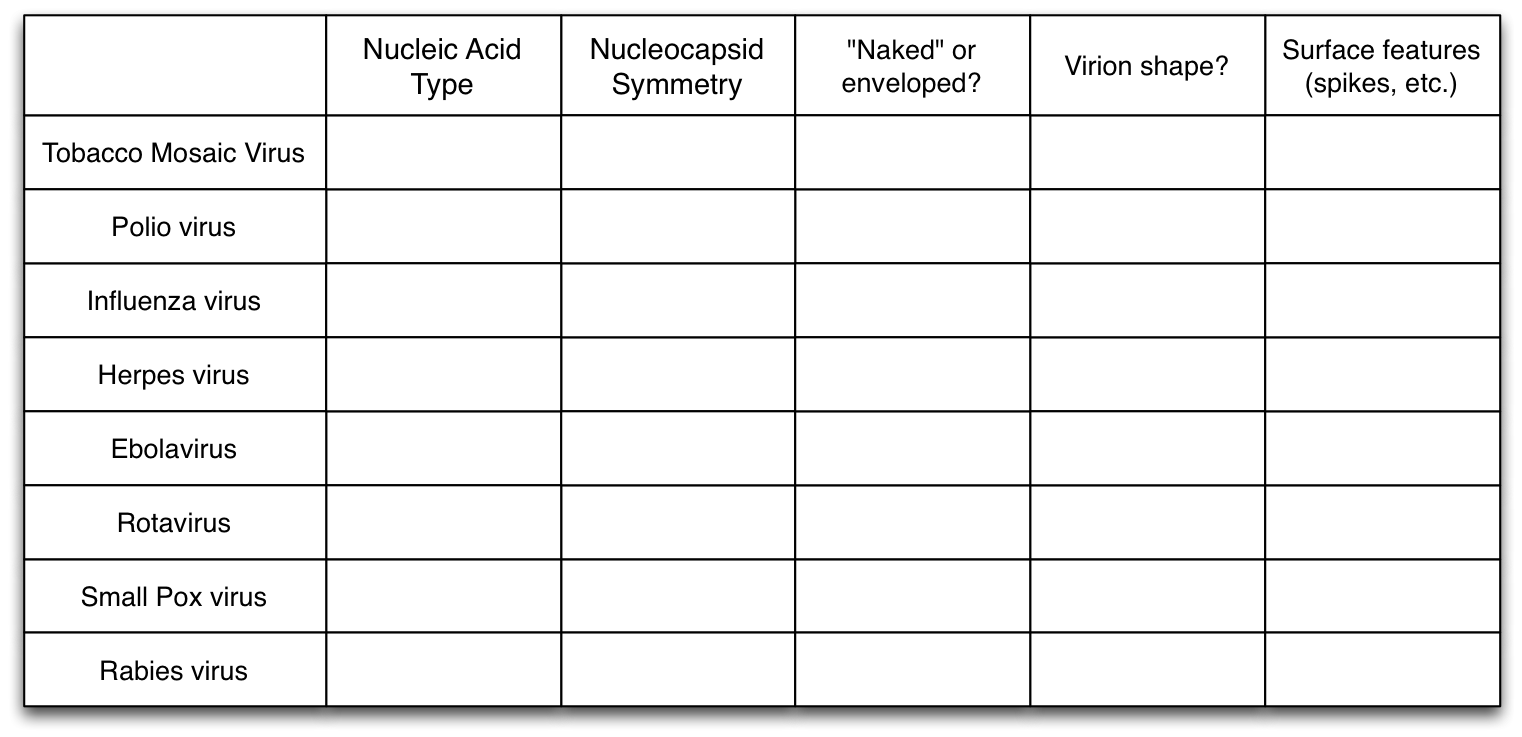- General features of viruses
- Viral replication
- Influenza virus
- HIV
1. The concepts covered here can be reviewed in your textbook, pages 369-374, and your lecture notes.
2. We used to define viruses as small, obligate intracellular parasites. As scientists discovered more and more organisms, it became clear that this is not enough (for example there are small bacterial cells that live as obligate intracellular parasites inside of eukaryotic cells). It is therefore best to think about all the features that viruses have. Review the five viral features we discussed in lecture and list them on a piece of paper.
3. Viruses exist in two forms. Outside of cells they exists as virions. Inside of cells, they typically exist as a nucleic acid, which is directing the synthesis of proteins and nucleic acids (mRNAs and copies of the viral genome). Review your notes and answer the following questions about virions:
- What is the definition of a virion?
- What is the function of a virion?
- What are the two mandatory features that all virions have?
- What is a capsid?
- What is a capsomere?
- What is a nucleocapsid?
- What are some "optional" features (not all virions have them)?
- Why are some viruses called "naked" while others are considered enveloped?
4. Most viral nucleocapsids exhibit some kind of symmetry. Review your notes and textbook and answer the following questions:
- Describe the two most common types of symmetry found in viral nucleocapsids?
- Copy and fill the following table, which describes the virions of some common viruses. Use your textbook and notes to get the info:

5. If you feel that you have mastered the concepts on this page, you can move to the next topic of this subunit, which explores the principles of viral replication.